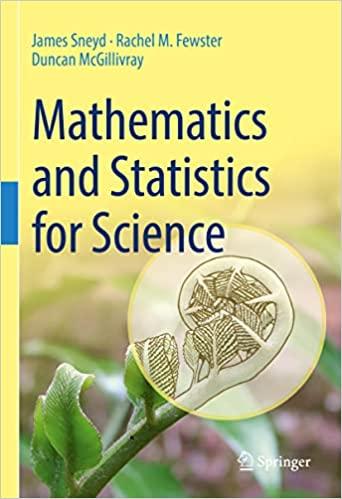Radiocarbon dating is a method of dating organic material (animal bones, petrified trees, etc) by measuring the
Question:
Radiocarbon dating is a method of dating organic material (animal bones, petrified trees, etc) by measuring the amount of radioactive carbon (14C) they contain. All living things continually incorporate carbon (C) into their bodies, a certain fraction of which is 14C, the rest being mostly 12C. However, when they die they stop incorporating any new carbon and thus the 14C in their bodies is left to decay slowly over time. Since 12C doesn’t decay, by measuring the 14C/12C ratio scientists can calculate how long ago that sample stopped incorporating 14C, and thus the time it died. The less 14C in the sample, the older it is.
a. Let c denote the amount of 14C. We saw earlier in this chapter that the differential equation for c is dc dt
= −kc.
Solve this equation for c(t), assuming an initial condition of c(0) = c0.
b. The half-life of a radioactive substance is the time taken for half of the original material to decay. If the half-life of The half-life is usually denoted by t1/2.
14C is 5,730 years, what is k?
c. Suppose that a sample contains only 1% of its original 14C.
How old is it?
This method relies on knowing the original amount of 14C in the sample, which is not easy to do, but we ignore this problem here. Mostly it’s reasonably accurate to assume that the proportion of 14C in a living animal bone today is similar to the proportion a long time ago.
d. The time constant, τ, is the time taken for an exponentially decaying substance to decay to 1/e of its original amount.
Calculate the time constant for 14C.
e. How is τ related to t1/2?
f. As a rule of thumb it’s reasonable to say that an exponentially decaying substance will have disappeared by t = 5τ.
Show that this isn’t exactly true, but it’s probably good enough for most things.
Step by Step Answer:

Mathematics And Statistics For Science
ISBN: 9783031053177
1st Edition
Authors: James Sneyd, Rachel M. Fewster, Duncan McGillivray






